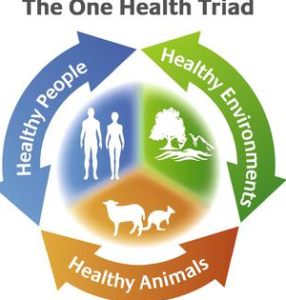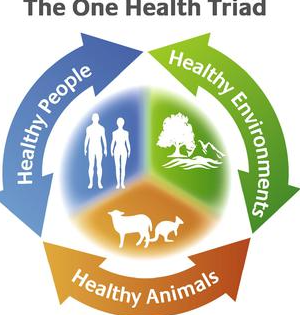BRUCELLOSIS – A ZOONOTIC DISEASE
(1Adarsh Bhambri 2 Gitesh Saini 3Jasleen kaur &4Priyanka Syal)
14th professional year BVSc. & A.H Scholar,
2Assistant Professor, Dept. of Veterinary Gynaecology & Obstetrics
3Assistant Professor, Dept. of Veterinary Medicine.
4 Assistant Professor, Dept. of Veterinary Pathology
(College of Veterinary Science, Rampura Phul, GADVASU, Ludhiana.Punjab)
*Email: dradarshbhambri@gmail.com (Corresponding Author)
Abstract
Brucellosis, a very common zoonotic infection transmitted to humans from animals can be spread through direct contact, infected food products or inhalation of the aerosols can one of the reason. It causes abortion in cattle and undulant fever in human beings. These clinical findings are considered as prominent clinical features. The disease is spread by facultative intracellular pathogen which has ability to survive and even shows exponential growth. Causal organism causing brucellosis is of genus Brucella which is characterised by abortion, retained placenta, orchitis (in very rare and minimal cases) and infection of accessory sex glands of males. It is infection of a major concern due to its pathogenicity and zoonosis along with its prevalence in almost every part of the world.
Keywords
Brucellosis, Serotype, Virulence, Zoonotic disease
Introduction
It was bought in notice during military campaign as brucellosis was the most striking disease in the Mediterranean region. The disease was elucidated by David Bruce, Hughes and Zammit working in Malta. The disease is also named as Malta Disease. Bang discovered B.abortus the causal agent of abortion in cattle and Brucellosis (undulant fever) in humans. Brucellosis in human beings is rarely fatal but can lead to severe debilitation and disability. It has been reported that approximately 2% of untreated patients dies of Brucellosis. The disease has the tendency towards chronicity and persistence, becoming granulomatous disease. The disease till date act as a great challenge for clinicians in timely and accurately and accurate diagnosis as it has non-specific clinical features along with the obtuse multiply ratio in the blood culture, and complexity in serodiagnosis. Six species are recognized within the genus Brucella: B. abortus, B. melitensis, B.suis, B. ovis, B. canis, and B.neotomae. This classification is based on the differences in pathogenicity and host preference.
B.melitensis is the most pathogenic spp. followed by B.abortus.it leads to undulant fever in the humans and leads to abortion in animals and sometimes orchitis in males and infection in the secondary accessory sex glands of males.
ONE HEALTH – A NEW CONCEPT?
Whereas One Health is commonly presented as a new perspective in the control and eradication of brucellosis, to a great extent, it was the other way around: the One Health paradigm owes much to the study of this zoonosis in the century . ONE MEDICINE – concept brought by Calvin Schwabe later expanded and renamed as ONE HEALTH as necessary step towards future quality and sustainability in future quality and survival of human life. He used brucellosis as an illustration towards One Medicine. An abridged definition of One Health corresponds to the collaborative efforts of multiple disciplines to attain optimal health for people, animals and the environment .
The elements used in these definitions and their interconnections are summarized in Figure 1

(FIG.1 The One Health Triad Source: Wikipedia images)
Brucellosis in Cattles
Awareness acts as frontline defence to maintain and implement One Health programmes of various zoonotic diseases. In Animal brucellosis insufficient knowledge related to the disease leads to constant economic losses and its perpetuations in humans due to underdiagnoses, and subsequent suffering, or a delay may lead to increases in the risk of its complications and ultimately therapeutic failure. It is most problematic and matter of concern in Malta fever is because of the lack of symptoms and signs in humans and animals.
The disease in cattle, water buffalo, and bison is caused almost exclusively by Brucella abortus.
The infection is rapidly spread which leads to many abortions in the animals who are not vaccinated against the disease.in disease endemic herd, the cattle which is not administered vaccination, typically aborts only once after the exposure to disease, subsequent gestation along with the lactations appears to the normal. The incubation may vary and is inversely related to stage of gestation in which the animal is. Cow may become temporarily infertile as infection causing organisms are released or shed in milk and uterine discharge. Even the bacteria can infects the semen in case of bulls. Uterine involution traces of bacteria can be found in uterus for prolonged time commonly in gravid uterus.
Transmission relatively occurs by indigestion of organisms, which are present in large numbers in aborted foetus, foetal membrane and uterine discharge. This can be spread to healthy cattle by ingesting contaminated feed and water or through licking of contaminated genitals of other infected animals. It can even spread through AI when semen contaminated by Brucella is injected or deposited in uterus but repeatedly not when deposited in mid cervix, mucous membrane, conjunctivitis; wounds or intact skin in both humans and animals can also be the root cause towards the infection through Brucella.
Exposure to direct sunlight to the animals can kills the organisms within a few hrs.
Clinical Findings
- The major manifestation and common finding is abortion
- Stillborn or weak calves, retained placenta and reduced milk yield
- In bull’s infections of seminal vesicles, ampulla, testicles and epididymis even infects the semen.
- Seminal Plasma may be demonstrated with the agglutinins in the case of infected bulls.
- Testicular abscess is also one of the clinical features of brucellosis.
- In case of longstanding infections arthritic joints can be witnessed in some cattle
Diagnosis
The diagnosis of the disease is based on serology or bacteriology. The strain B.abortus can be recovered from the placenta. In most of the cases it’s convenient to isolate from the pure culture of lungs and stomach from an aborted foetus. Diagnostic methods for brucellosis are primarily based on serology, with the LPS smooth chains producing the greatest immunological responses in various hosts. The major diagnostic problem is due to the similarity of the O-antigenic side chain of LPS of Brucella and other organisms like Yersinia enterocolitica O : 9, Vibrio. cholerae, Esherichia. coli 0 : 157, and Francisella. tularensis.
Blood culture is the gold standard in the diagnosis of bacterial infections including brucellosis, but this method is successful in only 40 – 70% of the cases. The Biphasic Ruiz-Castaneda system is the traditional method for the isolation of Brucella sps in clinical samples. Bone marrow cultures may provide higher sensitivity, yield faster culture times, and may also be superior to blood culture, when evaluating patients with previous antibiotic use. Brucella can also be cultured from pus, tissue, cerebrospinal fluid (CSF), and pleural / joint / ascitic fluid.
Conclusion(s)
Brucellosis is an endemic zoonotic disease in low, middle, and high-income countries that leads to the major losses to the livestock industry even to the small-scale livestock holders. It leads to the major burdens on human healthcare systems and limits the economic potential of individuals, communities, and nations. The implementation of public policy focused on mitigating the socioeconomic effects of brucellosis in human and animal populations is actually a need of an hour nowadays. The concept of “One Health” nature of the effects that brucellosis has indicate that collaboration of veterinary, medical, public health, cultural, economic and social experts plays the major role to bring an effective change in disease burden.
References
- Cultuer SJ, Whatmore AM, Commander NJ. Brucellosis- new aspects of an old disease. J Appl Microbiol. 2005;98:1270–81. [PubMed] [Google Scholar]
- Bang B. The etiology of epizootic abortion. J Comp Pathol Therap. 1897;10:125. [Google Scholar]
- Mantur BG, Amarnath S. Brucellosis in India. J Biosci. 2008;33:539–47. [PubMed] [Google Scholar]
- Umapathy BL, Nagamani M, Bhat P, Keshavamurthy BS. Seroepidemiological studies on human brucellosis in and around Bangalore. Indian J Comp Microbiol Immunol Infect Dis. 1984;5:83–7. [Google Scholar]
- Godfroid J, Cloekaert A, Liautard JP. From the discovery of the Malta fever’s agent to the discovery ofa marine mammal reservoir, brucellosis has continuously been re-emerging zoonosis. Vet Res. 2005;36:313–26. [PubMed] [Google Scholar]
- Madkour MM, Madkoure . Brucellosis.New York: Springer Verlag; 2001. [Google Scholar]
- Pappas G, Papadimitriou P, Akritidis N, Christou L, Tsianos EV. The new global map of human brucellosis. Lancet Infect Dis. 2006;6:91–9. [PubMed] [Google Scholar]
- Colmenero JD, Reguera JM, Cabrera FP. Serology, clinical manifestations and treatment of brucellosis. Infection. 1990;18:152–56. [PubMed] [Google Scholar]


